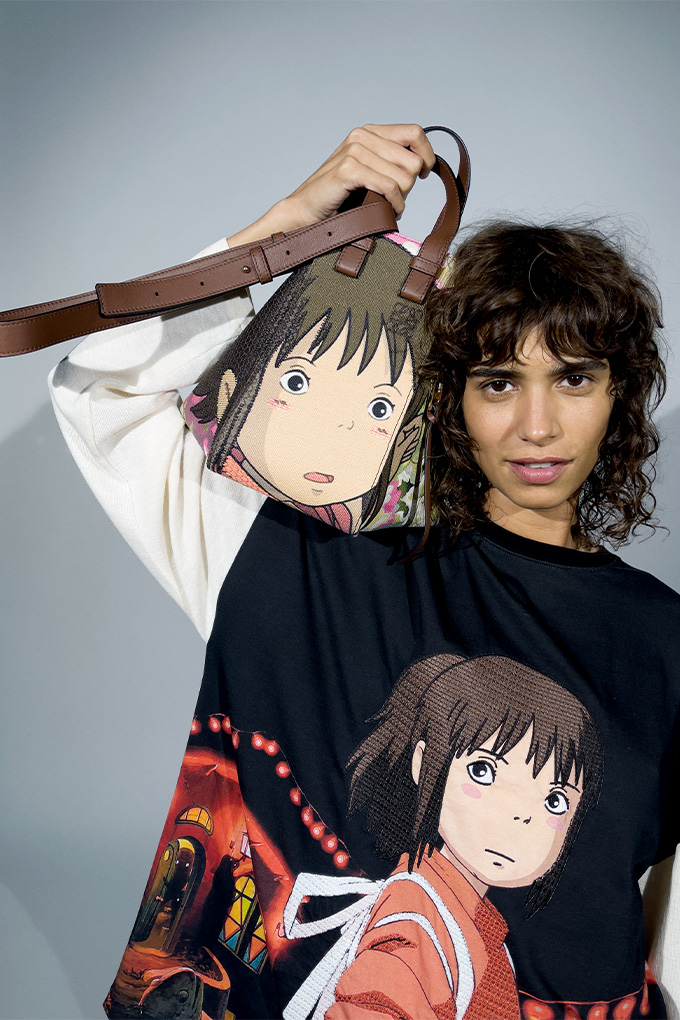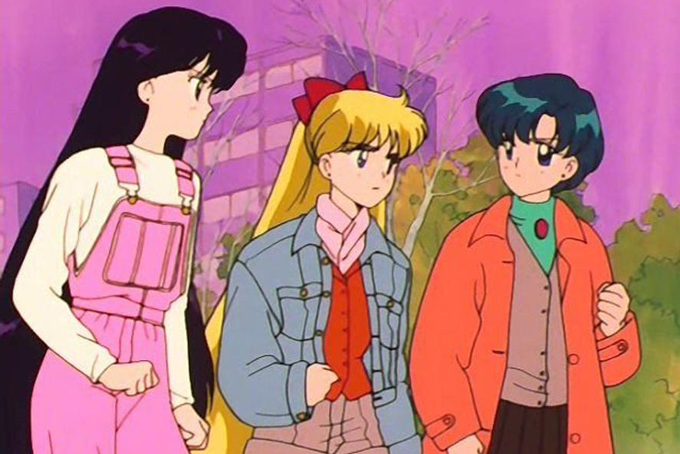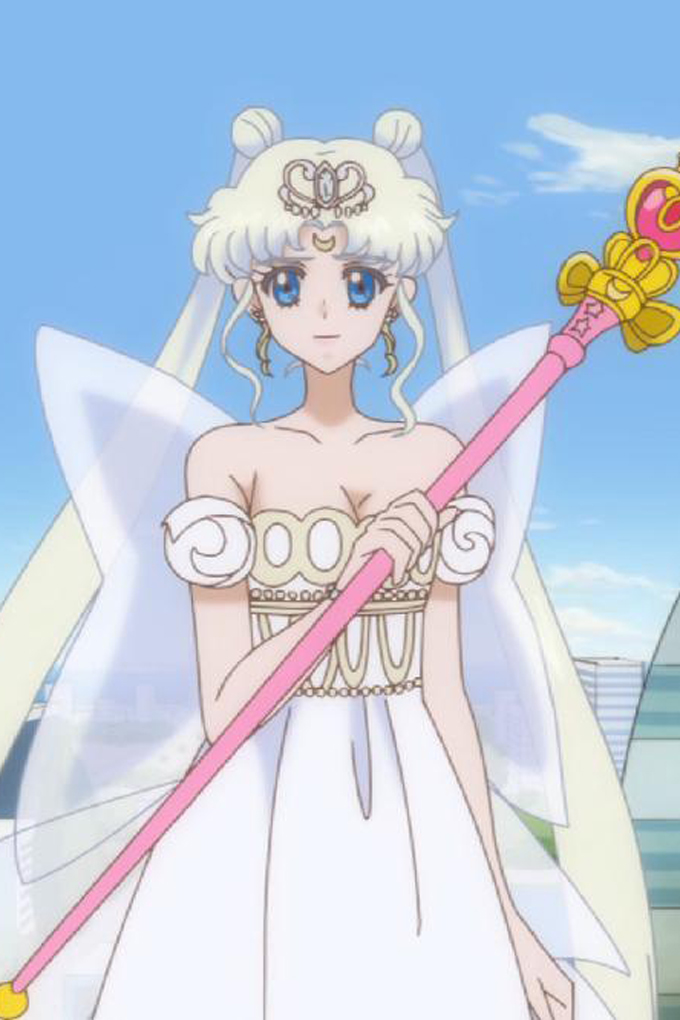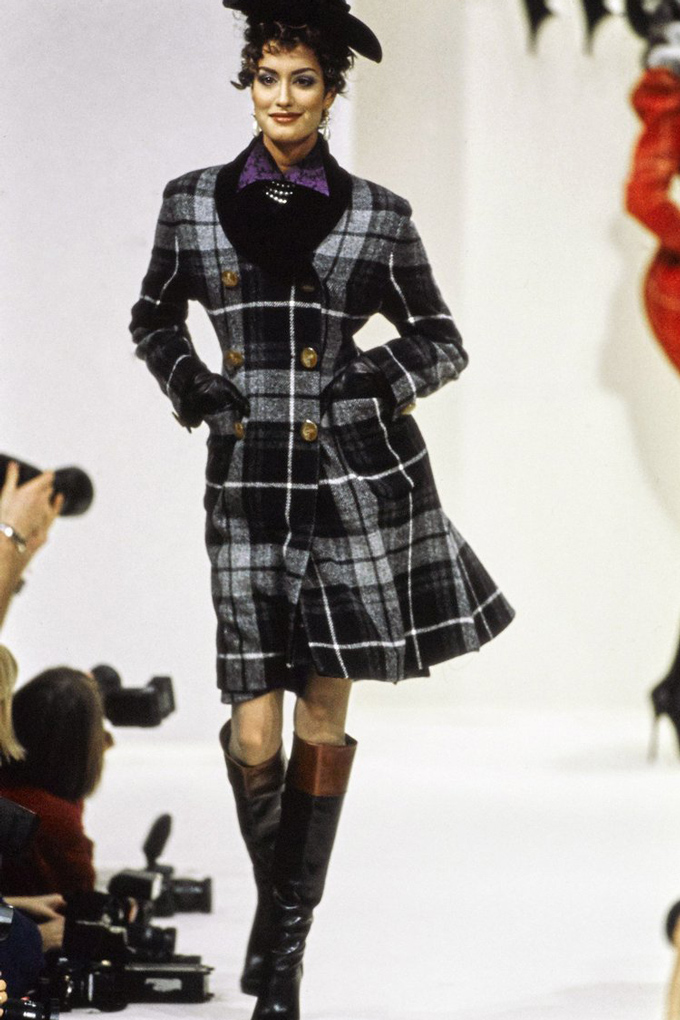The realms of fashion and anime have long shared the same spaces, even willingly interacting with each other in the form of fashion’s recent slew of unexpected collaborations or the ever-evolving cosplay culture. One would be hard-pressed not to notice the burgeoning draw luxury houses have had towards Japanese animation in the past few years. From the Gucci x Doraemon capsule to Loewe’s Spirited Away collection that came as a fun follow-up to their previous Studio Ghibli collection for My Neighbour Totoro in 2021, and the most recent development of Balmain working with the instantly recognisable Pokemon, it’s clear that the maisons have shifted their gears to make space for the eclectic world of anime.

Yet to claim that anime’s intersections with fashion are but a present-day venture would be a false declaration. Whilst the previously obscured world of anime is gaining exponential traction from audiences all over the globe for its fantastical plots and creative visuals, its interconnectedness with the sartorial landscape goes deeper than one might think. Perhaps the easiest manifestation one might visually latch onto is the cultural phenomenon of cosplay—where fans get dressed up from head to toe as their favourite anime characters. Once a community commonly associated as nerdy or obsessive, this impression has since grown worlds apart from its prior associations; evolving into one that celebrates idiosyncrasy and freedom of expression for all genders.
But dig a little deeper and perhaps one might see how certain anime series had an even bigger part to play in impacting the clothes youth were wearing. Two shoujo anime in particular—Sailor Moon (1992) and Nana (2005)—were more influential over the styles of young teenage girls than one might expect. Straight out of a ’90s time capsule, Sailor Moon’s inception into Western media goes all the way back to 1995, when the dubbed edition of the Sailor Scouts’s expeditions first hit broadcast television. And between fighting monsters, hanging out with each other and making it to school, the Sailor girls were owning their personal style.


Crop tops, high-chromatic ensembles and preppy sweaters or waistcoats were worked into the everyday wardrobe of the Sailor Moon with absolute ease—like a vivid imagining of the ‘90s comeback trend we’ve been witnessing in our midst. In the early 2000s, the influence of Sailor Moon was stamped in; other Western animations such as Totally Spies and Winx Club—both equally formative to younger girls—borrowed elements of the popular Japanese animation, including their iconic sartorial transformations. But creator Naoko Takeuchi had also been clearly referencing the couture of her time. From Sailor Saturn’s black-bow ensemble from Mugler’s 1992 fall/winter collection to the Dior-inspired Palladium gown that Princess Serenity wore, Takeuchi had punctuated the series’s more otherworldly moments with high fashion looks that looked like they had been illustrated right off the runway.


And whilst the Sailor crew might have inspired the casual-meets-preppy aesthetic of the ‘90s, another highly influential personality lived in Ai Yazawa’s Nana Osaki. One of two main protagonists in the manga-turned-anime series titled Nana, she was the epitome of what every punk-goth girl wanted to be. Nana’s outfits were often mirrored after the runways of Vivienne Westwood: a penchant for corset bustiers, ripped stockings underneath pleated tartan blazers and Westwood’s signature ‘Rocking Horse’ platforms all made up a substantial portion of her outfit rotation, perfectly teaming with her cool, wine-red lips and smudged eyeshadow that gave her the intrigue of the offbeat artist finding her way through Japanese society. It was an aesthetic that emboldened her from the shadows: romantic visionaries, artists with emotional sensibilities and misunderstood girls looked up to Nana and ultimately, her sense of style.


Elsewhere, cyberpunk fashion also gained ground when Katsuhiro Otomo’s Akira—the 1988 sci-fi action picture that prefaced brilliant apocalyptic notions—punctuated the film scene. Its distinctive ‘Akira red’ biker jumpsuit wasn’t just one to emulate, but soon became a stylistic pivot for many streetwear fashion brands including Comme des Garçons and Supreme that reimagined illustrations of the anime onto their clothes and accessories. A clear feat that points to the continued hold of the Japanese animation, considering it’s been thirty years since its release.

And as of late, anime aesthetics has also filled the TikTok sphere; setting the tone for emulating outfits inspired by anime characters, without having to resort to the entire cosplay package. A simple search of the hashtags #animeaesthetic or #animeoutfits might bring you to an endless scroll of easy-to-adopt outfits that carry the mood of the various anime characters. Think light academia for Bungo Stray Dogs’s Dazai or cyberpunk for Tokyo Ghoul’s Kaneki Ken. Some popular fan-led art accounts—an increasingly popular market for animation fans due to its artistic leanings—have also directly adopted the influence of luxury fashion, reimagining their characters in the modern context with high fashion clothes.
@redrinox probably gonna be doing tons of fashion vids from now on.. inspired by the one and only @wisdm8 . #fyp #fashion #foryou #anime ♬ Be Your Girl By Teedra Moses X Kaytranada Edition – The Favourites.
So as the worlds of anime and fashion continue to bleed further into one another, perhaps we can expect the realm of creative collaborations by the fashion houses with Japanese animation to expand even further—especially considering the ever-expanding space for visual art to proliferate through the runways. At the core of anime after all, is the unlimited stage for eclectic art and style to unfold. Where monsters can speak, bubblegum pink hair is a genre mainstay and your clothes can be as fantastical as you’d like them to be.





